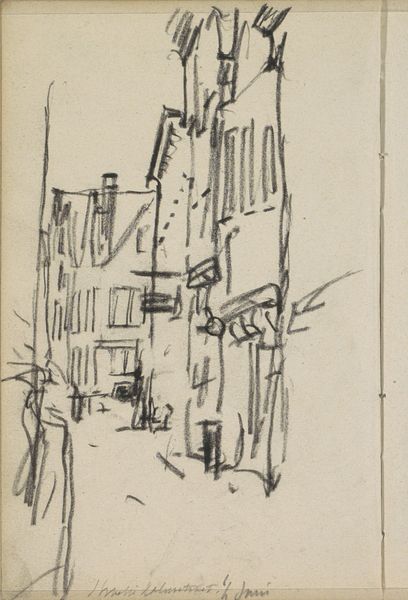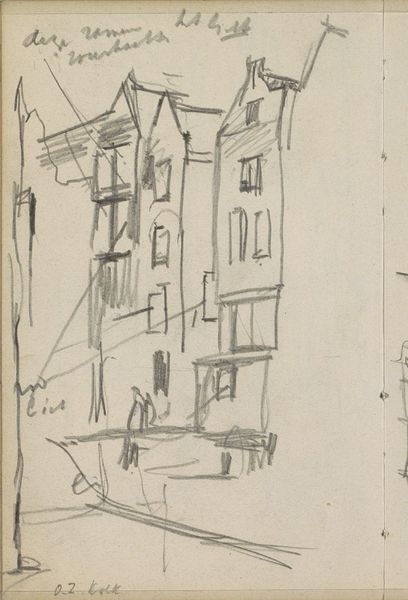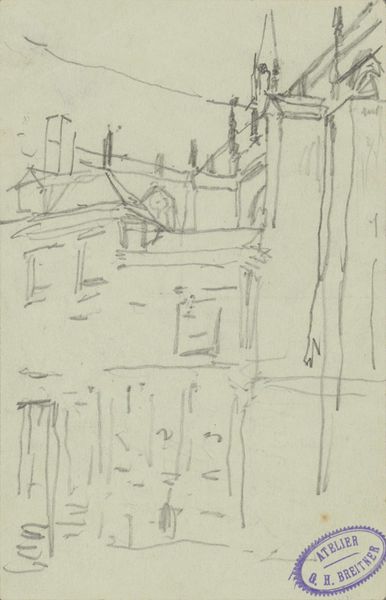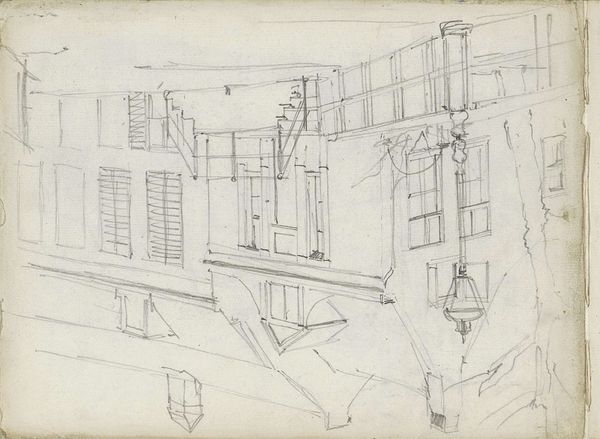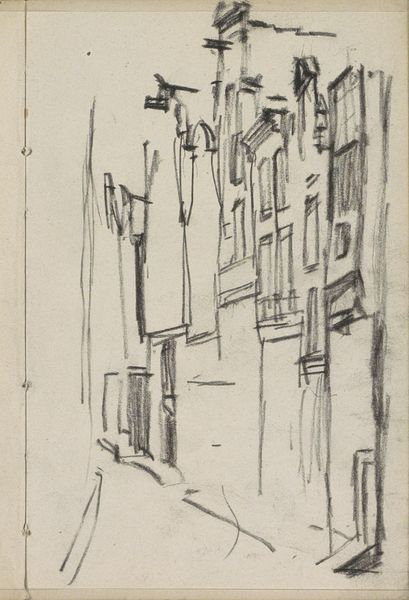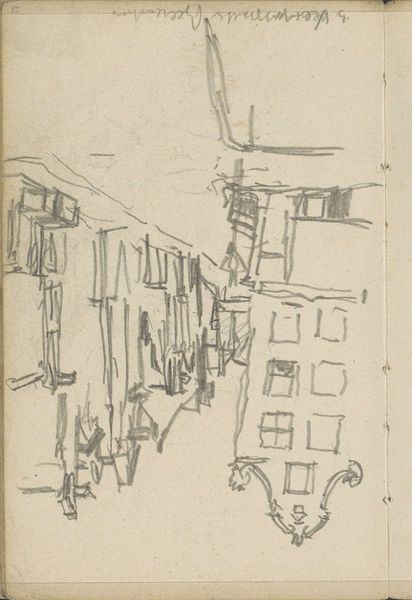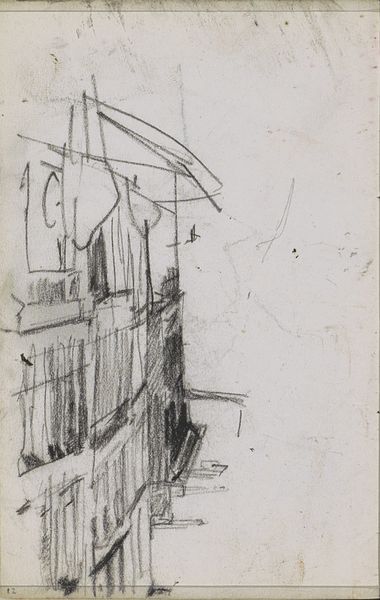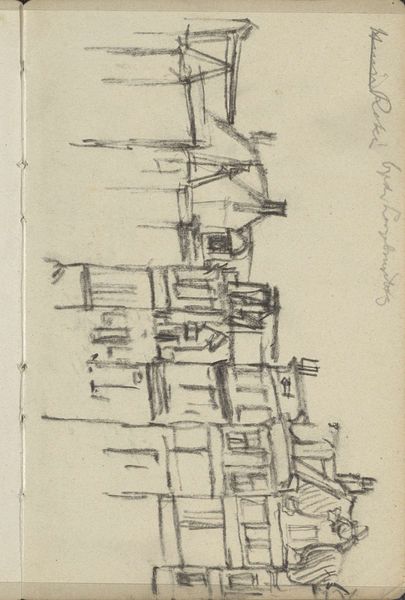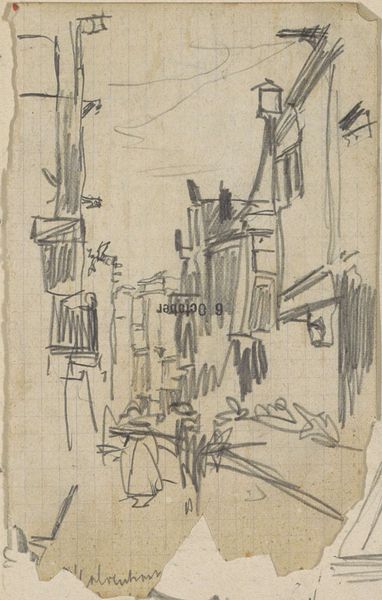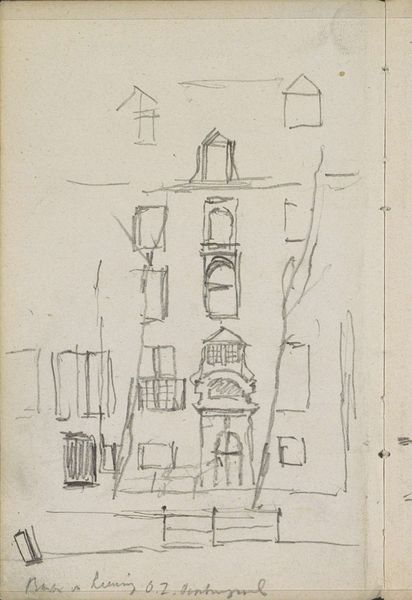
Gezicht op gebouwen tegenover het Magazijn Nederland, Dam 4 te Amsterdam c. 1900 - 1923
0:00
0:00
georgehendrikbreitner
Rijksmuseum
Copyright: Rijks Museum: Open Domain
Editor: Here we have "Gezicht op gebouwen tegenover het Magazijn Nederland, Dam 4 te Amsterdam," a pencil drawing by George Hendrik Breitner, created sometime between 1900 and 1923. It strikes me as an interesting interplay of lines, capturing a slice of Amsterdam's architecture. How do you interpret this sketch? Curator: Formally, I see an emphasis on line and composition, even at the expense of realistic representation. Breitner employs a rapid, almost staccato line that suggests form rather than precisely delineating it. Note how the converging lines create a sense of depth and dynamism, drawing the eye upwards. Consider the balance - or perhaps the *imbalance* - created by the clustered strokes on the left versus the relative openness on the right. Do you see that too? Editor: Yes, the density of lines on the left certainly creates a different feel. It’s less defined, more abstract in a way. Curator: Precisely. It invites us to consider the artwork as an autonomous object, a self-referential exercise in visual construction. The sketch is a plane marked by graphite; the shapes refer to a cityscape but are not defined by it. It exists in dialogue with itself. Editor: So you're saying the "what" of the image, the buildings themselves, are less important than the "how"—how Breitner constructed the image on the page? Curator: Exactly. We see a fascinating interplay between representation and abstraction, where the subject matter becomes a vehicle for exploring formal qualities. Notice how Breitner doesn't commit to outlining specific forms in these architectural spaces and voids. The perspective remains disjointed. Editor: That's a really insightful perspective! I initially saw it just as a quick sketch, but now I see how the very incompleteness contributes to its power. Curator: Indeed. The incompleteness, the suggestive quality of the lines, invite the viewer to participate in the construction of the image, highlighting the formal structure of representation itself. Editor: Thanks. Thinking about it this way really shifts my focus from subject to the artwork’s compositional elements.
Comments
No comments
Be the first to comment and join the conversation on the ultimate creative platform.

